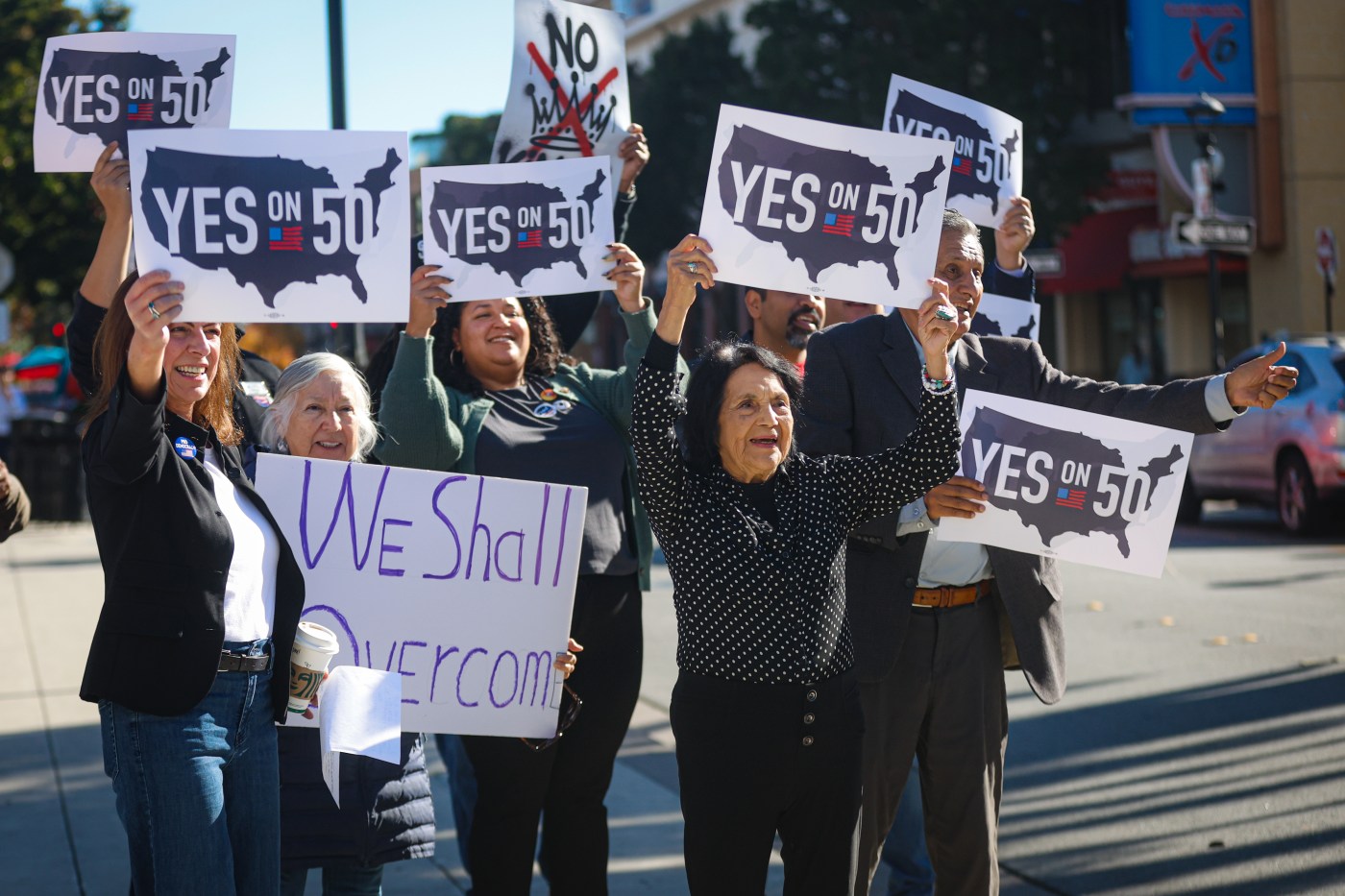Bay Area white-collar workers are spending about three days a week in the office, and survey results show most companies do not plan to mandate more days in the workplace, new data show.
Nearly two-thirds of office-based employees attended workplaces on three consecutive days: Tuesday, Wednesday and Thursday, according to a survey by the Bay Area Council of 236 companies with mostly white-collar workforces.
When the council first began surveying companies about remote work, in October 2021, the average number of days in office was 2.3.
About 40% of companies responding to the February survey said they had mandated increased in-office days over the previous six months, but only 22% said they planned to boost the number over the following six months.
However, larger firms, with 1,000 or more employees, were considerably more likely to say they would add mandatory office days over the next half year, said Abby Raisz, research director at the Economic Institute of the Bay Area Council, which represents businesses including major Silicon Valley tech companies Google, Meta and Apple.
Among companies making efforts to bring workers back to offices, some ask and some tell, with differing results, Raisz said.
“Overwhelmingly we found that those that require employees to come in feel like their policy is very effective,” Raisz said. “When they request, it’s less effective.”
The data comes as local and state government return-to-work mandates spark pushback. In Oakland, unionized city workers had been ordered to work four days in offices starting in early April, but the mandate was delayed until June 2, while San Francisco Mayor Daniel Lurie delayed a similar four-day order from April 28 to Aug. 18, according to local media reports. Gov. Gavin Newsom’s order mandating four days in the office for state workers has riled employees and a state workplace regulator.
The COVID pandemic upended working life and companies’ employment models after the outbreak pushed office-based workers to their homes, leading many to develop a strong appreciation for commute-free employment. However, as the pandemic waned, many companies backed away from remote work, with Mountain View digital-advertising giant Google in 2022 ordering most employees back to the office three days a week and others taking similar action.
Bobby Khullar of Danville works for an engineering, design and construction company in Walnut Creek that requires in-office work three or four days a week.
“It’s decent, but if I had my druthers it would definitely be working from home,” said Khullar, 50. His meetings are typically via video with clients, and there’s no real need to be in an office, he said.
“If the cameras are on, you just have to get the top half of yourself ready to go and you’re fine,” Khullar said.
A recent global survey of thousands of workers in 40 countries found that America trails only Canada in the number of people working from home.
The average number of days worked remotely in the U.S. was 1.8 in the period between November and February, slightly lower than Canada’s two days, according to the Global Survey of Working Arrangements, co-conducted by Stanford University economics professor Nick Bloom.
Those numbers reflect the “hybrid” model that has become widespread in English-speaking countries after the pandemic.
“Hybrid working from home is just so profitable for firms,” said Bloom, who collaborated on the survey with other researchers from the U.S., Europe and Mexico. “It reduces recruitment and retention costs without any productivity impact. Mixing remote with office work is “here to stay,” Bloom concluded.
Raisz said remote work has gained and maintained traction in the Bay Area because major industries like technology involve large numbers of jobs that can be done from home. Also, many companies recognize that many employees live far from the office, with time-consuming and costly commutes, and offer flexible schedules, Raisz said. That gives workers more power to leave jobs that force them into the office more than they would like, she said.
Sharon He of San Francisco, who works for a New York-based insurance firm, helped get her auditing team exempted from a company-wide order to work at least four days a week in an office.
“We couldn’t hire anybody with that policy,” said He, 31. “We need to be competitive.”
In Silicon Valley, “hybrid seems to have won out,” Bloom said by email this week. “The large majority of tech and finance firms out here are hybrid, typically having folks come into the office 2 or 3 days a week,” Bloom said. “Managers and employees are happy with this and it seems to be sufficient days to get work done and push through on productivity. Fully remote has become pretty rare, with a few folks lingering on from the pandemic and some elite coders.”
Meanwhile, furor is growing over a March executive order by Newsom mandating four office days a week for state workers. Newsom in his order — to take effect July 1 — cited “enhanced collaboration, cohesion, creativity and communication” and better opportunities for mentorship, supervision and accountability when employees work together from the office.
But on April 17, the state Public Employment Relations Board that oversees union-related laws covering state employees issued a preliminary finding alleging Newsom’s office broke state law by failing to meet and confer with an engineers union — which filed a complaint about the order — before he issued it. The matter is to go before an administrative law judge.
Related Articles
Nokia eyes hundreds of new jobs at big tech production hub in San Jose
AI might be scanning your resume. Here’s what job hunters should know
Job losses hammer Bay Area tech industry in brutal beginning for 2025
Bay Area hotel market languishes far below pre-COVID levels
Bay Area, California lose thousands of jobs as hiring tumbles
And foes of the order as of Thursday had crowd-funded more than $16,000 to erect a billboard in Sacramento showing a laughing Newsom with the words, “Think traffic is bad now? Wait until July 1st.”
Newsom’s office referred questions to the state’s human resources department, which declined to comment.
The numbers of people doing their jobs from home varies widely around the world, the Global Survey of Working Arrangements found. In Latin American countries where workers were surveyed, the rate of working from home was much lower than in the U.S., with an average of one day in Mexico and 1.4 days in Brazil. Asian countries had the lowest rates, with China, Japan and South Korean workers spending on average less than one day a week remote. In India, the working-from-home average came in at 1.6 days a week.
In a January presentation to the American Economics Association, Bloom broke down working-from-home by industry, saying finance and insurance workers did the most remote work, at about 2.4 days a week, with information workers — including some tech employees — following close behind at about 2.3 days. In retail, hospitality and food services, which require many on-site workers, the average was less than one day a week.
Bloom highlighted the commuting issue that has driven much of the conflict between employees and employers, telling the economists’ group that workers save 70 minutes on average every day they do their jobs from home. Another 10 minutes a day of time savings comes from being able to work without showering, donning fresh clothing, shaving or putting on makeup, Bloom said.
Bloom also noted that remote work has hollowed out the downtowns of many U.S. cities. In the San Jose area, only about 51% of seats in offices were occupied as of April 16, and in the San Francisco area, only about 43% of space was occupied, Kastle Systems, which generates office-occupancy numbers using data from people using badges to enter their workplaces, reported this week.
“Folks selling office space are not happy,” Bloom noted.





